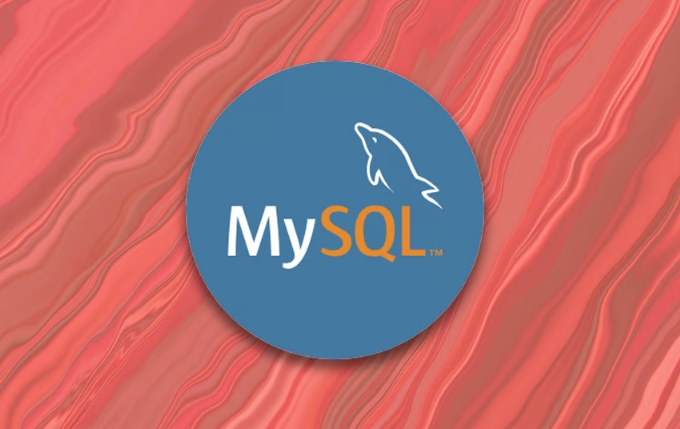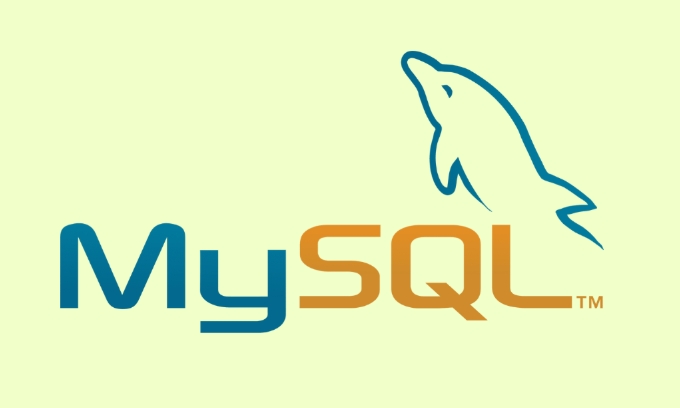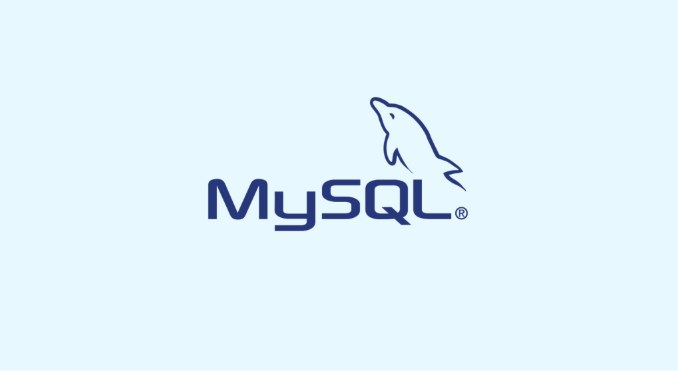Designing an efficient and scalable MySQL database structure requires starting from four aspects: data type, indexing strategy, standardization and anti-standardization and naming specifications. 1. Reasonably select the field type, such as using INT instead of BIGINT, CHAR is better than VARCHAR (fixed length), and the time field is preferred to DATETIME or TIMESTAMP to avoid abuse of TEXT/BLOB, and enumeration classes can be used for ENUM or small table foreign keys; 2. Use the index correctly, do not create indexes in low-cardinal sequences, avoid fuzzy matching failure, combine indexes follow the principle of leftmost prefix, and regularly analyze slow query logs; 3. Fight normalization and anti-standardization, appropriately redundant commonly used fields to reduce JOIN, wide tables or JSON fields can be used for scenarios that read more and write less, but data consistency risks need to be prevented; 4. Clear and unified naming, use lowercase underscores to separate, add comments and maintain documents, and improve team collaboration efficiency.

Designing an efficient and scalable MySQL database structure is the basis for building stable applications. Many performance problems and maintenance problems have actually laid the groundwork as early as when building tables. The key is to plan the relationship between field types, index policies and tables in advance.

1. Reasonably select the data type
MySQL provides a wealth of data types, but choosing the right one is the key. For example, INT is enough for integers, so there is no need to use BIGINT; if the length of a string is fixed, CHAR is more suitable than VARCHAR; the time field is preferred to DATETIME or TIMESTAMP, pay attention to the differences in their range and time zone processing.

- Try to use smaller data types: the smaller the space, the higher the read and write efficiency
- Avoid abuse of TEXT/BLOB types, which may cause additional disk I/O and memory consumption
- Enumerated class fields can be considered to use ENUM or use foreign keys to associate small tables to avoid using magic values.
2. Use index correctly
The more indexes, the better, and not all queries can hit the index. Common misconceptions include adding indexes (such as gender) to low cardinality sequences, or using wildcards at the beginning of fuzzy matches to cause index failure.
The focus is on indexing fields that are often used to query conditions, sort, and group. When querying multi-field, combined indexes are more effective than multiple single-column indexes, but pay attention to the principle of leftmost prefix.

For example, there is such a joint index (name, age, city):
- You can hit the name query
- You can hit the name age query
- Can't hit age or city query alone
Also, remember to analyze the slow query log regularly to see which fields are missing indexes and which indexes are not used.
3. The trade-off between standardization and anti-normative
In database design, the third normal can reduce data redundancy, but sometimes some anti-specifications are needed to query performance. For example, save user names in the order table instead of joining the user table every time.
Common practices include:
- Redundant some commonly used fields to reduce join operations
- For scenarios where more reads and less writes, wide tables or materialized views can be used (although MySQL native support is limited)
- Use JSON fields to store unstructured data, but control how often you use it and how you access it
However, it should also be noted that excessive anti-standardization will bring about data consistency risks and need to be judged in combination with business logic.
4. Clearly named and complete documents
Try to use underscore-separated lowercase English, such as user_profile instead of UserProfile. Unified naming style helps with post-maintenance.
Also, don't forget to add comments. You can use the COMMENT keyword to add descriptions to tables and fields. When collaborating with a team, it is best to have a document that is updated simultaneously, even if it is just a simple ER diagram.
Basically that's it. A good schema design is not necessarily complicated, but it must be thought-provoked.
The above is the detailed content of Best practices for MySQL database schema design. For more information, please follow other related articles on the PHP Chinese website!

Hot AI Tools

Undress AI Tool
Undress images for free

Undresser.AI Undress
AI-powered app for creating realistic nude photos

AI Clothes Remover
Online AI tool for removing clothes from photos.

Clothoff.io
AI clothes remover

Video Face Swap
Swap faces in any video effortlessly with our completely free AI face swap tool!

Hot Article

Hot Tools

Notepad++7.3.1
Easy-to-use and free code editor

SublimeText3 Chinese version
Chinese version, very easy to use

Zend Studio 13.0.1
Powerful PHP integrated development environment

Dreamweaver CS6
Visual web development tools

SublimeText3 Mac version
God-level code editing software (SublimeText3)

Hot Topics
 What is GTID (Global Transaction Identifier) and what are its advantages?
Jun 19, 2025 am 01:03 AM
What is GTID (Global Transaction Identifier) and what are its advantages?
Jun 19, 2025 am 01:03 AM
GTID (Global Transaction Identifier) ??solves the complexity of replication and failover in MySQL databases by assigning a unique identity to each transaction. 1. It simplifies replication management, automatically handles log files and locations, allowing slave servers to request transactions based on the last executed GTID. 2. Ensure consistency across servers, ensure that each transaction is applied only once on each server, and avoid data inconsistency. 3. Improve troubleshooting efficiency. GTID includes server UUID and serial number, which is convenient for tracking transaction flow and accurately locate problems. These three core advantages make MySQL replication more robust and easy to manage, significantly improving system reliability and data integrity.
 What is a typical process for MySQL master failover?
Jun 19, 2025 am 01:06 AM
What is a typical process for MySQL master failover?
Jun 19, 2025 am 01:06 AM
MySQL main library failover mainly includes four steps. 1. Fault detection: Regularly check the main library process, connection status and simple query to determine whether it is downtime, set up a retry mechanism to avoid misjudgment, and can use tools such as MHA, Orchestrator or Keepalived to assist in detection; 2. Select the new main library: select the most suitable slave library to replace it according to the data synchronization progress (Seconds_Behind_Master), binlog data integrity, network delay and load conditions, and perform data compensation or manual intervention if necessary; 3. Switch topology: Point other slave libraries to the new master library, execute RESETMASTER or enable GTID, update the VIP, DNS or proxy configuration to
 How to connect to a MySQL database using the command line?
Jun 19, 2025 am 01:05 AM
How to connect to a MySQL database using the command line?
Jun 19, 2025 am 01:05 AM
The steps to connect to the MySQL database are as follows: 1. Use the basic command format mysql-u username-p-h host address to connect, enter the username and password to log in; 2. If you need to directly enter the specified database, you can add the database name after the command, such as mysql-uroot-pmyproject; 3. If the port is not the default 3306, you need to add the -P parameter to specify the port number, such as mysql-uroot-p-h192.168.1.100-P3307; In addition, if you encounter a password error, you can re-enter it. If the connection fails, check the network, firewall or permission settings. If the client is missing, you can install mysql-client on Linux through the package manager. Master these commands
 Why is InnoDB the recommended storage engine now?
Jun 17, 2025 am 09:18 AM
Why is InnoDB the recommended storage engine now?
Jun 17, 2025 am 09:18 AM
InnoDB is MySQL's default storage engine because it outperforms other engines such as MyISAM in terms of reliability, concurrency performance and crash recovery. 1. It supports transaction processing, follows ACID principles, ensures data integrity, and is suitable for key data scenarios such as financial records or user accounts; 2. It adopts row-level locks instead of table-level locks to improve performance and throughput in high concurrent write environments; 3. It has a crash recovery mechanism and automatic repair function, and supports foreign key constraints to ensure data consistency and reference integrity, and prevent isolated records and data inconsistencies.
 Why do indexes improve MySQL query speed?
Jun 19, 2025 am 01:05 AM
Why do indexes improve MySQL query speed?
Jun 19, 2025 am 01:05 AM
IndexesinMySQLimprovequeryspeedbyenablingfasterdataretrieval.1.Theyreducedatascanned,allowingMySQLtoquicklylocaterelevantrowsinWHEREorORDERBYclauses,especiallyimportantforlargeorfrequentlyqueriedtables.2.Theyspeedupjoinsandsorting,makingJOINoperation
 What are the ACID properties of a MySQL transaction?
Jun 20, 2025 am 01:06 AM
What are the ACID properties of a MySQL transaction?
Jun 20, 2025 am 01:06 AM
MySQL transactions follow ACID characteristics to ensure the reliability and consistency of database transactions. First, atomicity ensures that transactions are executed as an indivisible whole, either all succeed or all fail to roll back. For example, withdrawals and deposits must be completed or not occur at the same time in the transfer operation; second, consistency ensures that transactions transition the database from one valid state to another, and maintains the correct data logic through mechanisms such as constraints and triggers; third, isolation controls the visibility of multiple transactions when concurrent execution, prevents dirty reading, non-repeatable reading and fantasy reading. MySQL supports ReadUncommitted and ReadCommi.
 What are the transaction isolation levels in MySQL, and which is the default?
Jun 23, 2025 pm 03:05 PM
What are the transaction isolation levels in MySQL, and which is the default?
Jun 23, 2025 pm 03:05 PM
MySQL's default transaction isolation level is RepeatableRead, which prevents dirty reads and non-repeatable reads through MVCC and gap locks, and avoids phantom reading in most cases; other major levels include read uncommitted (ReadUncommitted), allowing dirty reads but the fastest performance, 1. Read Committed (ReadCommitted) ensures that the submitted data is read but may encounter non-repeatable reads and phantom readings, 2. RepeatableRead default level ensures that multiple reads within the transaction are consistent, 3. Serialization (Serializable) the highest level, prevents other transactions from modifying data through locks, ensuring data integrity but sacrificing performance;
 How to add the MySQL bin directory to the system PATH
Jul 01, 2025 am 01:39 AM
How to add the MySQL bin directory to the system PATH
Jul 01, 2025 am 01:39 AM
To add MySQL's bin directory to the system PATH, it needs to be configured according to the different operating systems. 1. Windows system: Find the bin folder in the MySQL installation directory (the default path is usually C:\ProgramFiles\MySQL\MySQLServerX.X\bin), right-click "This Computer" → "Properties" → "Advanced System Settings" → "Environment Variables", select Path in "System Variables" and edit it, add the MySQLbin path, save it and restart the command prompt and enter mysql--version verification; 2.macOS and Linux systems: Bash users edit ~/.bashrc or ~/.bash_






